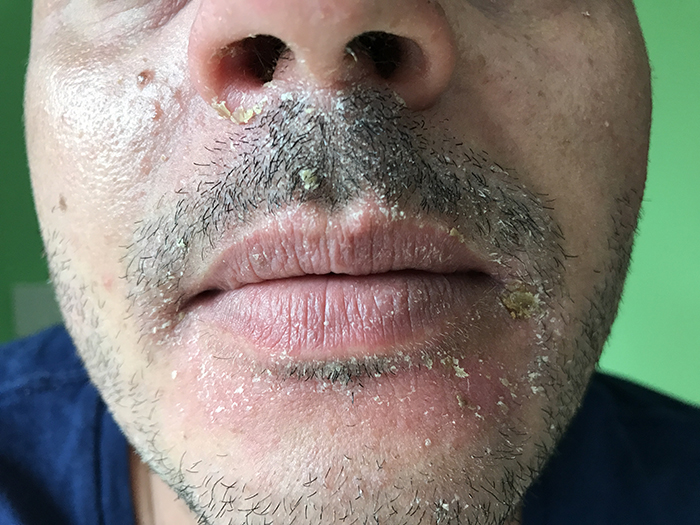- Home
- About
- Medical
- Before & After
- Cosmetic
- Ultherapy
- Keloid Treatment
- Morpheus 8
- Body Contouring Laser
- Laser for Acne Scars
- Laser for Veins
- Laser Hair Removal
- Facial Rejuvenation
- Cosmetic Mole Removal
- Microdermabrasion
- Microchanneling
- Microneedling
- PDO Threading (Non-Surgical Face Lift)
- Chemical Peels
- Dermal Fillers
- Botox
- Facial Treatments
- Dermaplaning
- IV Drip Therapy/Vitamin Shots
- NAD + IV Therapy
- Blog
- Dermatologic Surgery
- Payment Plan
- Hair
- Products
- Nurse Practitioner Externship
- Contact
- Acne Treatment
- Blackheads Removal
- Whiteheads Removal
- Allergies and Hives
- Bacterial Infection
- Cyst Removal
- Dandruff Treatment
- Folliculitis Treatment
- Fungal Infections
- Itching or Inflammation
- Itchy Scalp
- Moles or Skin Tags
- Psoriasis Treatment
- Wart Treatment
- Allergies and Hives Treatment
- Seborrheic Dermatitis Treatment
- Sebaceous Cysts Removal
- Lipoma Removal
- Allergy and Hives Testing
- DPN Treatment
HAVE A QUESTION?
Call Us Now
(770) 389-9116
Seborrheic Dermatitis
Effective Treatment Options
Seborrheic dermatitis is a prevalent skin condition characterized by red, inflamed skin covered with flaky, white or yellow scales. It primarily affects oily areas of the body, such as the scalp, face, sides of the nose, eyebrows, ears, eyelids, and chest. Commonly known as dandruff when it affects the scalp, seborrheic dermatitis can also occur in other regions, leading to discomfort and self-consciousness. While the exact cause remains unclear, factors such as yeast overgrowth, genetics, stress, and environmental conditions are believed to contribute to its development.
For those in Stockbridge, Georgia, seeking expert care for seborrheic dermatitis, Dr. David Bryant, one of the world's leading dermatologists, provides state-of-the-art treatment solutions. His expertise in skin health ensures that patients receive personalized care to effectively manage and control this condition.
Symptoms of Seborrheic Dermatitis
The manifestations of seborrheic dermatitis can vary among individuals but typically include:
-
Skin Flakes (Dandruff): White or yellowish scales that shed from the skin or scalp.
-
Red, Greasy Skin: Inflamed patches that may appear oily.
-
Itching or Burning Sensation: Discomfort in the affected areas.
-
Crusting or Scaling: Particularly noticeable on the scalp, ears, face, chest, armpits, or back.
In infants, seborrheic dermatitis is referred to as cradle cap and presents as crusty, scaly patches on the scalp. This condition is generally harmless and usually resolves on its own within a few months.
Causes and Risk Factors of Seborrheic Dermatitis
While the precise cause of seborrheic dermatitis is not fully understood, several factors may play a role:
-
Malassezia Yeast: A yeast that naturally resides on the skin; overgrowth can trigger an inflammatory response leading to seborrheic dermatitis.
-
Genetic Predisposition: A family history of the condition can increase susceptibility.
-
Environmental Factors: Cold, dry weather can exacerbate symptoms.
-
Stress: Emotional stress may worsen the condition.
-
Medical Conditions: Individuals with neurological diseases like Parkinson’s disease or those with compromised immune systems are at higher risk.
-
Diagnosis
Dr. David Bryant can diagnose seborrheic dermatitis through a comprehensive physical examination of the affected skin. In some cases, a skin biopsy may be performed to rule out other conditions with similar presentations, such as psoriasis or eczema.
Treatment Options for Seborrheic Dermatitis
Managing seborrheic dermatitis involves reducing inflammation and scaling, alleviating itching, and preventing flare-ups. Dr. Bryant tailors treatment plans to each patient’s specific symptoms and the severity of their condition.
1. Medicated Shampoos:
-
Antifungal Shampoos: Products containing ketoconazole or ciclopirox help reduce yeast overgrowth on the scalp.
-
Zinc Pyrithione Shampoos: Effective in decreasing fungal growth and reducing dandruff.
-
Selenium Sulfide Shampoos: Assist in slowing down the death of skin cells, reducing flakiness.
-
Salicylic Acid Shampoos: Aid in removing scales from the scalp.
For optimal results, these shampoos should be used as directed by Dr. Bryant. Some medicated shampoos can cause dryness or hair breakage, especially in individuals with tightly coiled or chemically treated hair.
2. Topical Treatments:
-
Corticosteroid Creams or Lotions: Help reduce inflammation and itching.
-
Antifungal Creams or Gels: Target yeast overgrowth on the skin.
-
Calcineurin Inhibitors: Such as tacrolimus or pimecrolimus, these are used to reduce inflammation, particularly in sensitive areas like the face.
These treatments are typically applied once or twice daily, depending on the product and the severity of the condition. Long-term use of corticosteroids can lead to side effects, so they are usually prescribed for short-term use under Dr. Bryant’s supervision.
3. Lifestyle and Home Remedies: Seborrheic Dermatitis
-
Regular Cleansing: Gently washing the affected areas daily with a mild soap or shampoo can help reduce oiliness and remove dead skin cells.
-
Moisturizing: Applying a fragrance-free moisturizer can help prevent dryness and reduce scaling.
-
Sunlight Exposure: Moderate exposure to sunlight may improve symptoms, but it’s important to use sunscreen to protect the skin.
-
Stress Management: Practices such as yoga, meditation, or other relaxation techniques can help manage stress, potentially reducing flare-ups.
Dr. David Bryant advises patients to consult with him before starting any new treatment regimen to ensure it’s appropriate for their specific situation.
When to See a Dermatologist
If over-the-counter treatments and self-care measures do not alleviate symptoms, or if the condition causes significant discomfort and affects daily activities, it’s important to consult Dr. David Bryant in Stockbridge, Georgia. As a trusted expert in dermatology, he offers the most advanced treatment options to help patients achieve clear and healthy skin.
Conclusion
Seborrheic dermatitis is a common and manageable skin condition. With expert care from Dr. David Bryant, individuals can effectively control symptoms and improve their quality of life. Regular consultations and personalized treatment plans ensure optimal results and long-term relief.
-
Schedule Your Treatment Consultation Today
Don’t let Seborrheic dermatitis affect your confidence and well-being. Contact World’s Famous Dermatologist in Stockbridge, Georgia, to schedule a consultation with Dr. David Bryant. Our team is dedicated to helping you achieve clear, healthy, and radiant skin.
Ready to take the first step toward clearer, healthier skin? Book a consultation, recognized as a leading dermatologist for treatment. During your appointment, we’ll assess your skin and recommend the most effective treatment options tailored to your unique needs.
Contact Us
770-389-9116







